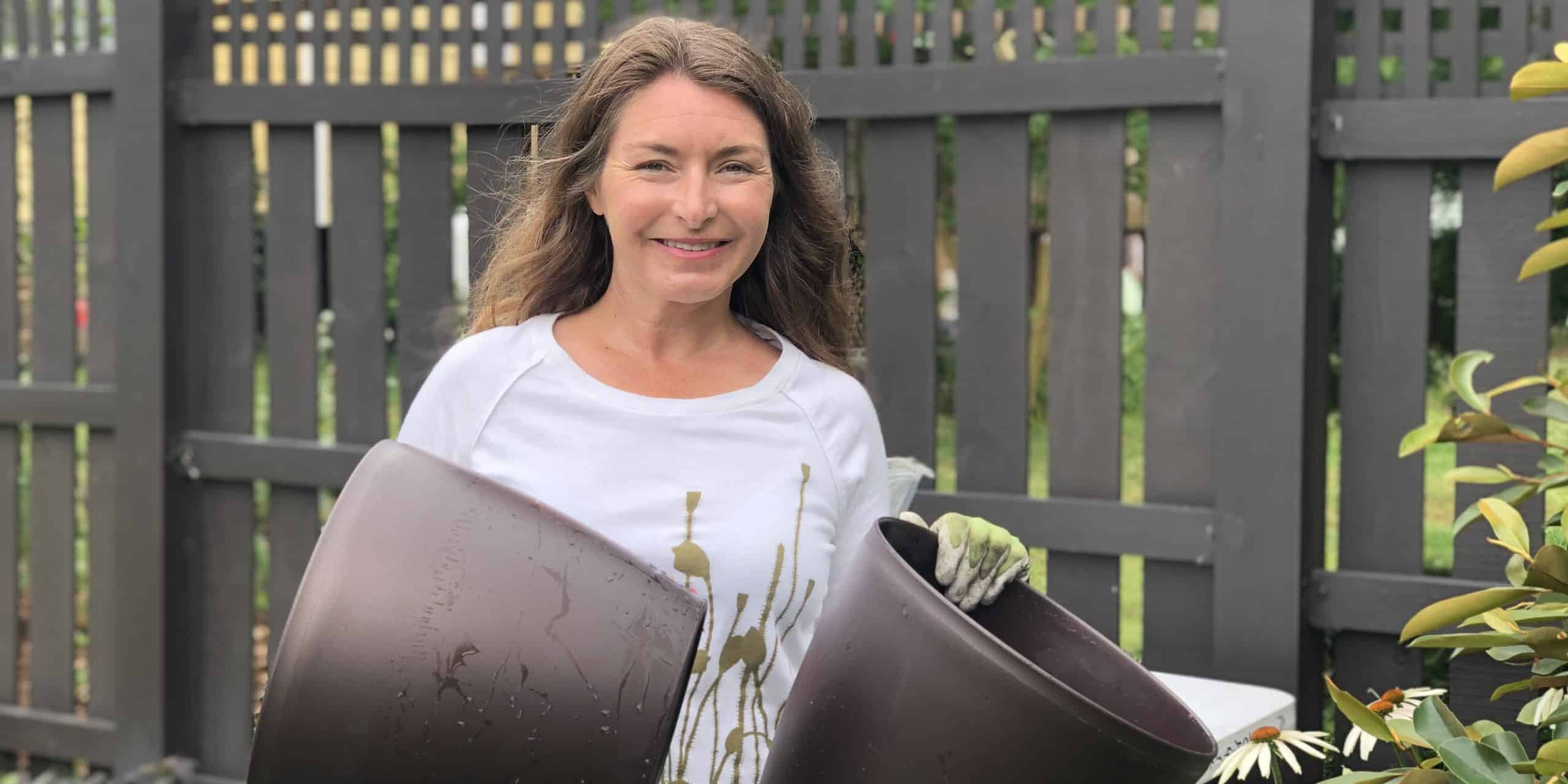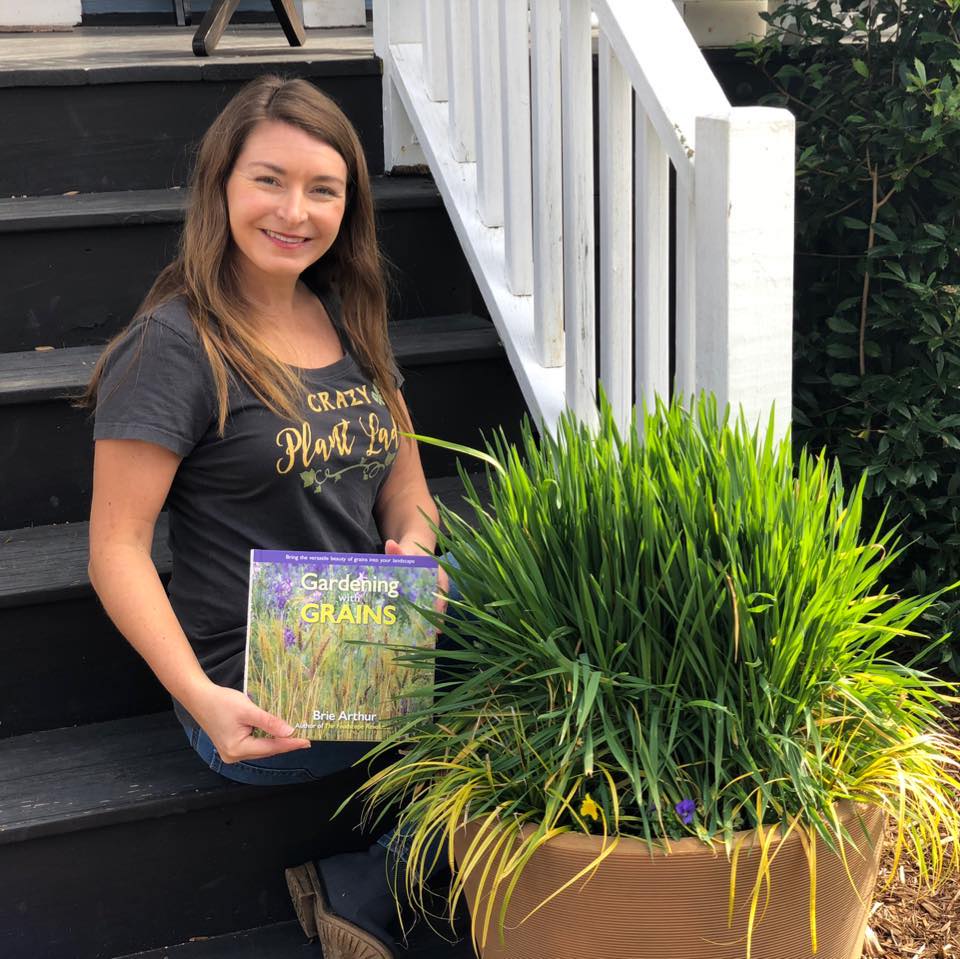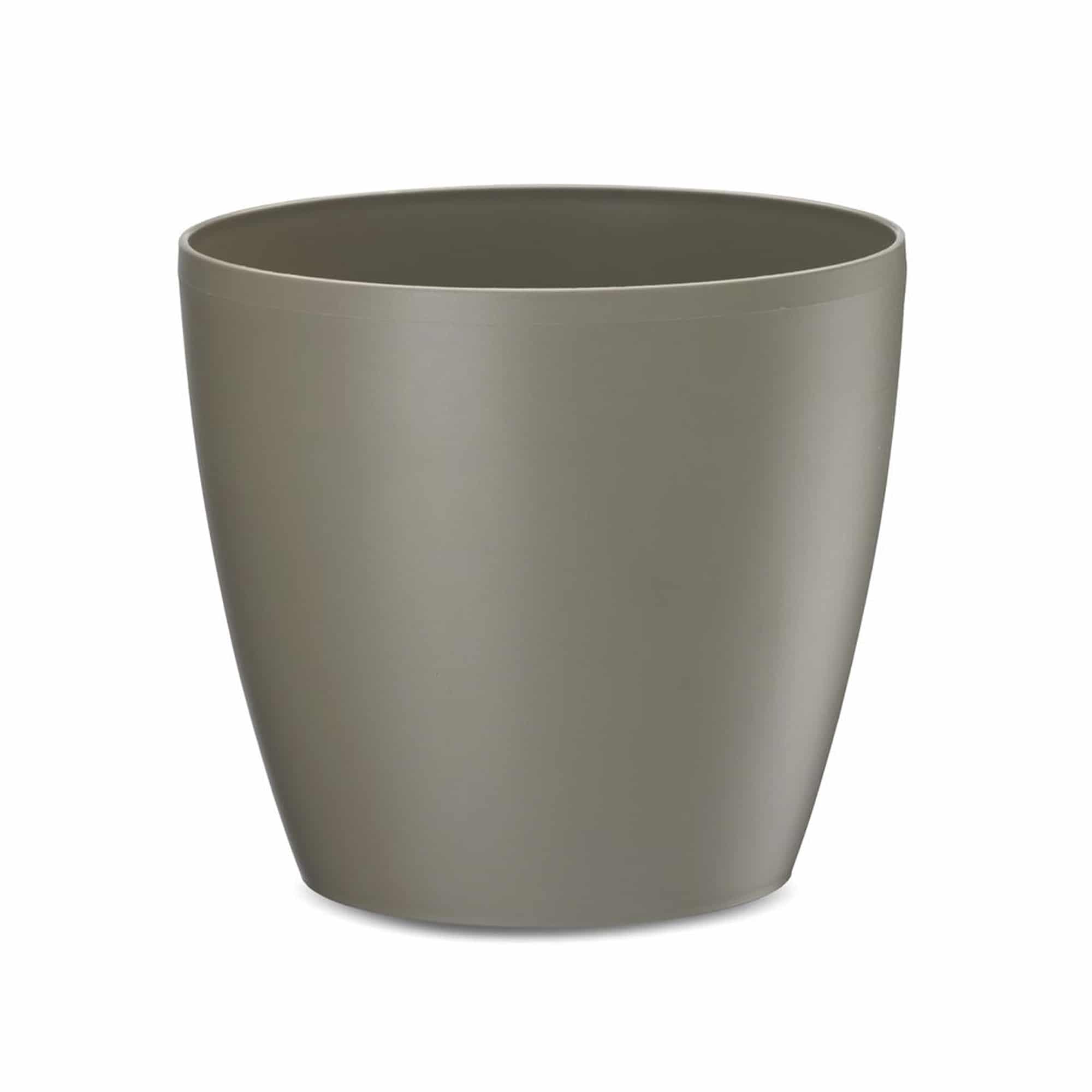Before you begin planting, here are a few important tips to keep in mind for a successful container gardening experience!
Location
Full sun is best for traditional vegetables, which means 4-6+ hours of direct light. This exposure will ensure that you will have ample harvests from fruiting varieties such as eggplant, peppers, and tomatoes all summer long. If you happen to garden in more shade, however, have no fear! Leafy greens like kale, lettuce, and spinach thrive in less direct sunlight.
Another key to success is to position your container garden near a water source. No matter what you are growing, you will have to water through the heat of the summer. And keep in mind, container combinations get thirsty. The Crescent Garden TruDrop One and TruDrop Flex are great for making sure your garden is getting plenty of water, thanks to their self-watering technology that will help keep your foodscape combination hydrated!
Also be sure to place your pot in a convenient spot for harvesting. One of my favorite areas to display foodscape containers is right outside my kitchen door. This is a spot that I walk past regularly, have a hose adjacent to, receives southern exposure, and is easy to harvest from.
Types Of Containers
The Crescent Garden container line offers a wide variety of styles, sizes, and colors that are guaranteed to make your foodscape combination look great all season! The Madison is one of my long-time favorite planters because I can grow so many different plants together for dynamic combinations.
Despite being over a decade old, my Juno pot looks brand new! This year I planted my 5-year-old Key Lime tree into it, and I expect a huge harvest later this summer.
The Mod Low Square is another fantastic Crescent Garden pot. This design is extra efficient through the heat of the summer because it has the built in TruDrop One system, an innovative self-watering capacity to reduce my need to irrigate!
My all-time favorite planter for container gardening is the Nest, which also features the self-watering TruDrop system. This raised bed is perfect from growing foodscape combinations year-round!
Soil & Mulch
Traditional potting soil works well for foodscape containers. My recommendation is to use the soil you are experienced with. After planting, be sure to mulch your pot with your choice of top dressing. This will help maintain moisture and eliminate any soil splash during heavy rainstorms. I use triple shred hardwood mulch most often, but also recommend pea gravel, Permatill (to deter squirrels and chipmunks), and even well washed shells.
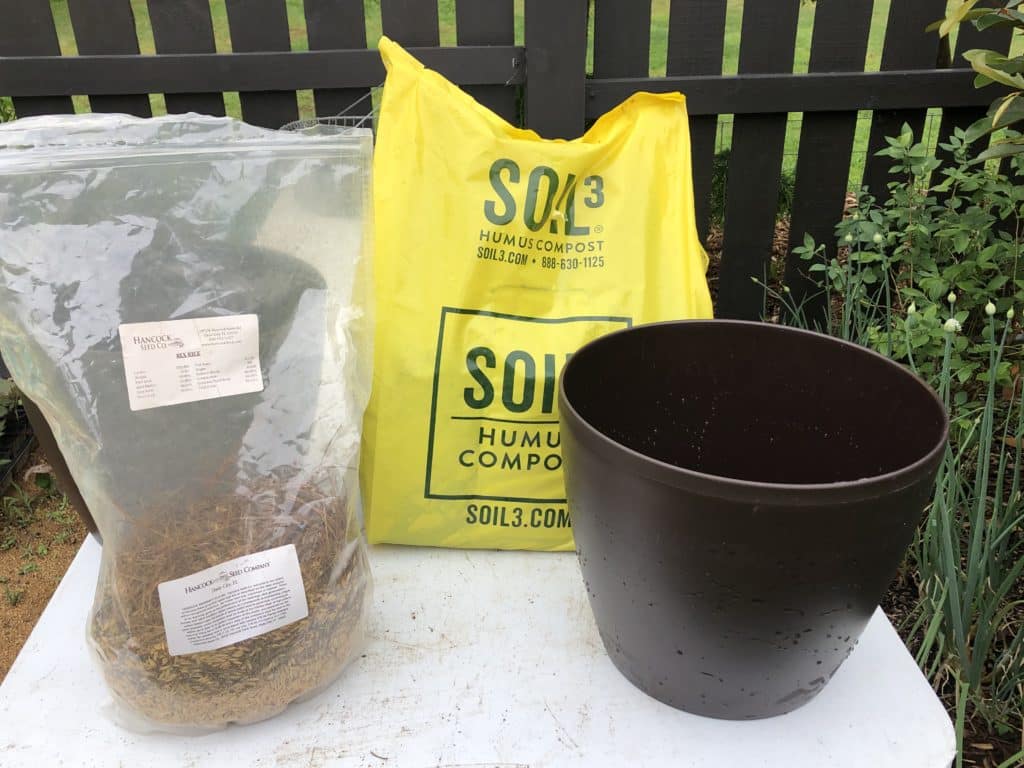
Creating the right container potting mix can deter your animal friends from getting into your new plants.
Fertilizer
As an organic gardener, I recommend natural fertilizers which will lead you to long-term success. One of the main things to avoid with fertilizer is using a ratio that is too strong, which can lead to the plants growing excessively and then succumbing to insect infestations. The Espoma line of fertilizers, such as GardenTone, work great for containers when first planted. I also apply fish emulsion or liquid kelp to all my containers once a month between May and September to ensure all the plants get the nutrients they need to thrive.
Insect Control
Insect infestations are usually much lower when growing in containers. However, if you have a sudden outbreak of aphids, whiteflies, or mealybugs, insecticidal soap is the easiest and safest remedy. And you can even make your own!
INGREDIENTS:
- Soap: Pure Castille soap has fatty acids and dissolves in water
- Water: Tap or distilled depending on your water quality
- Bottle: 1 quart of water per 1 tablespoon of soap
HOW TO:
- Step 1: fill 1-quart spray bottle up with warm water
- Step 2: Add 1 tablespoon of soap
- Step 3: Screw on the lid and shake to mix well
VARIATIONS:
- 1 tsp apple cider vinegar will help with powdery mildew
- 1 Tbsp vegetable oil will allow the spray stick longer
Caterpillars can also commonly cause damage to your favorite summer veggie plants. The easiest and safest way to control problem caterpillars such as cabbage worms and tomato hornworms is applying Bacillus thuringeiensis (BT). This bacterium is rated as organic and is safe to apply on food crops.
Watering and Maintenance
There is no “one size fits all” rule to watering. My best advice is simple: if a plant is wilting water it! Also, stick your finger in the soil to check the moisture content. The great thing about growing in Crescent Garden TruDrop self-watering pots is that your irrigation needs are considerably lower.
Remember that plants grow fast, and some will benefit from trimming through-out the season. My rule of thumb is, if a plant gets ugly, remove and replace it!
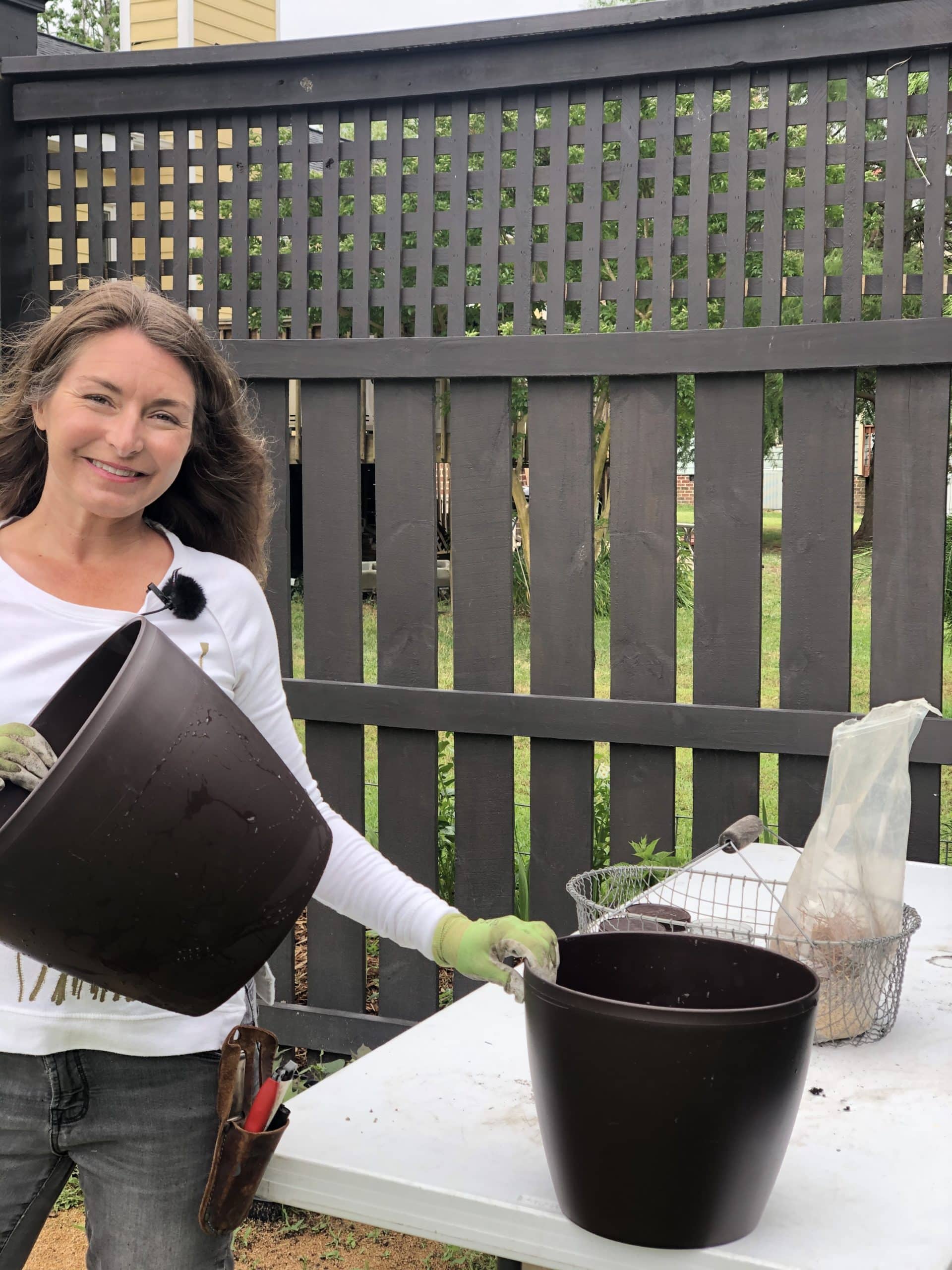
Enjoy renewing and replacing as needed.
Warm Season Foodscape Combinations
The sky is the limit when it comes to foodscape pairings. Always grow what you love, both aesthetically and from a practical eating standpoint. The general rule of including a “thriller”, “filler”, and “spiller” is recommended when making a foodscape combo.
- Fruiting plant (tomato, pepper, eggplant) = Thriller
- Foliage/ Flowers (coleus, angelonia, plectranthus) = Filler
- Colorful vines (sweet potato, creeping Jenny, petunia) = Spiller
- Groundcover Herbs (oregano, thyme, creeping rosemary, sage) = Spiller
Grow Like Never Before: Summer Rice Planting
Have you ever considered growing your own rice? Oryza sativa is a fantastic summer-loving grain and is an ideal plant for gardeners that live in regions that are hot and humid. It also thrives in containers with no drainage holes! It will look beautiful all summer, and the local birds will appreciate it as they usually steal the ripe seed first! No, this won’t replace your need to buy rice at the grocery store, but it is a unique growing experience that everyone should have!
Here is a how-to video featuring the decorative Eva pot with no holes.
Cool Season Foodscape Combinations
To extend the gardening season consider growing frost tolerant plants. Here are a few of my favorites:
- Grains (barley, oats, wheat) = Thriller
- Brassica (kale, cabbage, broccoli, mustard, etc) = Filler
- Ornamental Flowers (pansy, snapdragons, violas) = Filler
- Groundcover Herbs (oregano, thyme, creeping rosemary) = Spiller
Gardening With Grains In Containers
Grains are a great candidate to be grown in a container garden as the “thriller” element, like how Purple Fountain grass is used. There are a lot of different grain plants to choose from. A few of the best performers in containers include:
BARLEY- Horedeum vulgare
OATS- Avena sativa
WHEAT- Triticum aestivum
The process for planting is simple:
- Fill a pot that has drainage holes with soil- I like using 5-7-gallon sized pots
- Scatter grain seed on top of soil
- Lightly cover seed with soil
- Top dress with mulch of your choice
- Grains will germinate outside in roughly 2 weeks and grow all season
Remember, that just like many ornamental grasses, grains prefer to be grown in full sun, with moist, well-drained soil that has a neutral pH. Though they are adapted to adverse environments, the advantage of growing grains in containers is that you can provide the ideal conditions to maximize their growth. Compared to more commonly cultivated plants, such as tomatoes, grains are the easiest plant in the world to grow!
I hope you will be inspired to create some foodscape container combinations this growing season and enjoy the fruits of your labor in beautiful Crescent Garden containers!
